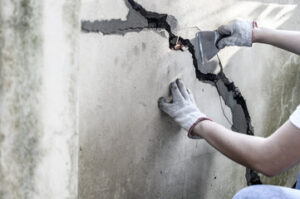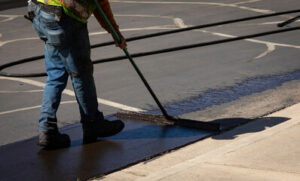When water suddenly starts dripping through a ceiling, it is a sign that the roof needs to be replaced. Getting a new roof is an investment that will add value to your home and help protect your belongings.

Several programs exist to assist homeowners with the cost of roofing repairs and replacement. Homeowners can also borrow personal loans, but should be careful not to spend more than they can afford to repay.
Whether to repair or replace a roof is a big decision for any homeowner. The right choice can help increase the value of a home and save on energy costs. However, the cost of a new roof can be high, making it important to consider all the options before committing to a project. There are a number of elements that determine the overall cost, including location, weather, and the size of the roof.
The age of the roof is one of the most significant factors that can influence whether to repair or replace it. A new roof is typically more expensive than repairs, but it can also offer a longer lifespan than an old one. It’s also worth considering the extent of any damage, as repairs may not be enough to fix leaks or other problems in some cases.
Another factor is the choice of materials, which can affect the price of reroofing. Some materials, such as slate or copper, are much more expensive than basic asphalt shingles, but they may add value to the home. Similarly, the shape and facets of the roof can also influence costs. For example, a dutch roof may require more structural work than a gable or hipped roof.
Other costs to keep in mind include labor and permits. The cost of a new roof can vary by region, so it’s a good idea to get quotes from multiple contractors to compare prices. In addition, homeowners should consider the impact of taxes and fees. In some cases, these can be significantly higher than the cost of the new roof itself.
While the cost of a new roof isn’t tax-deductible for most homeowners, it can be depreciated over the course of 27.5 years. This can be beneficial for homeowners who use their home for business purposes. It’s also possible to get a tax credit for certain energy-efficient roof options.
If a homeowner cannot afford to pay for the cost of a new roof in cash, they can apply for a personal loan or credit card. However, homeowners should be careful to limit their borrowing to avoid damaging their credit score. Additionally, they should never put a debt on more than 30 percent of their total available credit.
Materials
The roofing materials that are used in a roof replacement can make a substantial difference in the total cost. Some factors that affect this choice are outside the homeowner’s control, including geography and weather conditions. However, a home owner can choose alternative materials to save on costs or add value to the house. For example, many homeowners prefer the look of a wood shingle or shake roof that is made from cedar, pine, or spruce. Some of these types of roofing are more expensive than basic asphalt shingles, but they can last up to 50 years.
Another material option is metal, which is usually manufactured from galvanized steel or aluminum. This material is also durable and can be fabricated to resemble traditional asphalt shingles or even stone or clay tiles. Some homeowners may want to use a standing seam metal roof for its durability, low maintenance, and energy efficiency. It is possible for a metal roof to last up to 75 years.
Other roofing materials include terra-cotta, ceramic tile, wood shingles, synthetic wood, and slate. Some of these materials are available in a wide range of colors and styles, so homeowners can select the type that best suits their aesthetic preferences. Some of these roofing materials are extremely heavy, which can put additional strain on the trusses and rafters of the house. This can cause structural problems that may not be immediately apparent.
A new roof can also require the installation of ice and water barriers, which are placed at the lower edges of the roof. These barriers prevent ice from melting and water from pooling under the shingles and damaging the structure of the roof. These barriers can also help reduce the amount of air pollution that enters the home from the outdoors.
The most common roofing material is asphalt shingles, which are inexpensive and easy to install. They come in a variety of shades and styles, from basic three-tab shingles to 30- or 50-year premium architectural shingles. Homeowners who want a longer-lasting and more attractive roof should consider clay or slate tile roofs, which can have a lifespan of up to 150 years. However, these tiles can be quite heavy and may cause the roof to shift from its original position.
Installation
A roof replacement involves removing the old roofing materials and installing new ones. In most cases, this is a much larger project than simply doing roof repair work. This is because a full replacement typically requires the removal of the entire existing roof and often includes other work that is necessary to protect your home from the elements. This is why a professional should be hired to complete this type of large-scale work.
Once the contractor begins, the process will start with a thorough inspection of the existing roofing structure. Then, the underlying framework will be repaired if needed to ensure that your roof will remain sturdy and structurally sound. Some contractors will also check for areas where moisture may seep into your home, especially near penetrations and in the gaps around chimneys or other openings on the roof.
The next step is to install the underlayment, a layer of water-resistant material that covers the roof deck and helps keep moisture out of your home. Felt paper or tar paper is then stapled to the underlayment for additional moisture protection. Lastly, the shingles or other chosen roofing materials will be installed on top of the sheathing and water-resistant barrier. In some areas, flashing will be needed to protect eaves, valleys, roof edges and along chimneys or wood stove pipes, as well as in other leak-prone areas. Roofing cement will also be used to seal the edges and in other areas where the roofing components meet together.
As the roofing material is installed, the contractor will likely trim any overhanging branches and other obstructions that could damage your new roof during storms or high winds. In addition to maximizing the lifespan of your new roof, this will also help with preventing potential problems like mold growth and temperature fluctuations.
A permit is often required for roof replacement projects to ensure that the work complies with local building codes and regulations. However, the requirements for permits vary from locale to locale. In some places, a permit is only necessary if the work exceeds certain monetary or square footage limits. In other cases, a permit will be required for any construction that affects the structural integrity of a home or property.
Warranty
A quality roof warranty offers a safety net against unforeseen costs and issues that could jeopardize the overall functionality of your home’s roofing system. However, it’s essential for homeowners to understand the nuances of top-rated warranties in order to ensure they select coverage that precisely aligns with their requirements and preferences.
Essentially, there are two types of roof warranties: manufacturer and contractor. The former covers material defects, while the latter covers workmanship. Most manufacturers offer extended warranties for a longer period of time than their standard warranties, and they also require that the work be performed by contractors who are certified by the manufacturer to install the materials.
Additionally, many manufacturers produce impact-resistant roofing materials. These are designed to resist damage from high-speed flying debris, which could otherwise cause serious structural problems for your home. Adding this type of protection to your roof can be a good idea if you live in an area prone to hail storms.
Many top-rated roofing contractors offer a workmanship warranty, which guarantees that the installation of your new roof is done correctly. This is typically a separate warranty from the manufacturer’s warranty, and its duration can vary by New York roofing contractor. Some of these warranties are valid for lifetime, while others may be voided if the contractor is not regularly inspected and maintained by the homeowner.
It’s also important to read the fine print of your roofing warranty to make sure you understand exactly what it does and does not cover. For instance, some warranties are voided if the roof is not properly maintained, such as having it inspected and cleaned by a professional on a regular basis. Also, some warranties are pro-rated, which means that the coverage will diminish over time.
Finally, be aware that most manufacturers’ warranties do not cover damage caused by natural events such as heavy snowfall, lightning or hail. Unless it is specified in your manufacturer’s warranty, you will need to add on an additional insurance policy for these types of claims. While these are not common, they do occur, and it’s best to be prepared.


